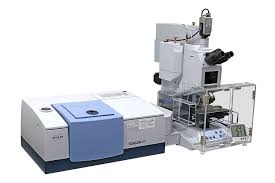Description
3An Electrochemical Workstation is a precision instrument used to study electrochemical processes by applying controlled electrical signals and measuring the resulting response. It’s widely used in battery research, corrosion studies, sensors, electrocatalysis, bioelectrochemistry, and material characterization.
???? What It Does
It enables researchers to perform:
-
Potentiostatic and galvanostatic control (voltage or current control)
-
Electrochemical Impedance Spectroscopy (EIS)
-
Cyclic Voltammetry (CV)
-
Chronoamperometry/Chronopotentiometry
-
Tafel Analysis, LSV, DPV, SWV, and more
???? Main Components
| Component | Function |
|---|---|
| Potentiostat/Galvanostat | Controls and measures voltage and current in a 3-electrode setup. |
| Electrochemical Cell | Contains the working, reference, and counter electrodes immersed in electrolyte. |
| Computer Software | Used to set experimental parameters and analyze data (e.g., CV curves, Nyquist plots). |
| Electrode Set | Usually includes working (e.g., glassy carbon), reference (Ag/AgCl), and counter (Pt wire) electrodes. |
| Faraday Cage (optional) | Minimizes electrical noise in sensitive measurements like EIS. |
⚙️ Typical Specifications
| Parameter | Typical Range |
|---|---|
| Voltage Range | ±10 V or more |
| Current Range | fA to A (nano- to kiloamp range depending on model) |
| EIS Frequency Range | 10 µHz – 1 MHz |
| Data Sampling Rate | Up to 1 MS/s |
| Electrode Configuration | 2, 3, or 4-electrode systems |
???? Key Electrochemical Techniques Supported
| Technique | Application |
|---|---|
| Cyclic Voltammetry (CV) | Reversibility, redox potential, reaction kinetics |
| Electrochemical Impedance Spectroscopy (EIS) | Battery and fuel cell characterization, corrosion |
| Chronoamperometry / Chronopotentiometry | Charge transfer, diffusion |
| Linear Sweep Voltammetry (LSV) | Corrosion potential, electrocatalysis |
| Tafel Analysis | Corrosion rate, exchange current |
| Differential Pulse Voltammetry (DPV) | Analytical detection, sensor development |
???? Applications
-
Battery R&D (Li-ion, solid-state, flow batteries)
-
Fuel cell performance testing
-
Electrocatalyst activity (e.g., HER, OER, ORR)
-
Corrosion testing and inhibitor studies
-
Biosensors and enzymatic sensors
-






Reviews
There are no reviews yet.